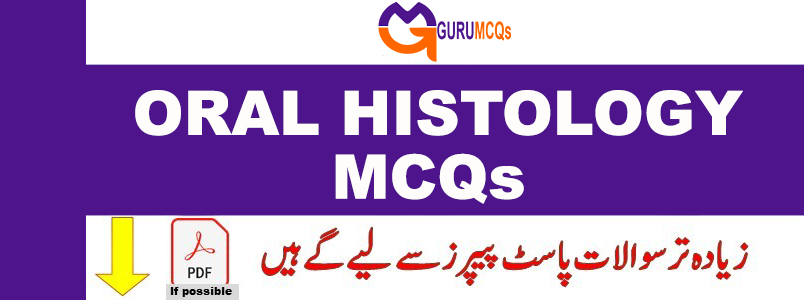
Histology, derived from the Greek words “histo,” meaning tissue, and “logy,” meaning science, is the scientific discipline dedicated to the study of tissues. By delving into oral histology and embryology, individuals can establish a robust understanding of oral biology. The subject encompasses the examination of cellular and tissue development and structure, including the various stages of tooth development and maturation. Areas of focus include the constituents of tissues such as cells, intercellular substances, tissue fluids, and components of human teeth like enamel, dentin, and dental pulp. Gurumcqs.com offers Oral Histology Multiple-Choice Questions (MCQs) along with answers, carefully curated from reputable reference books on oral histology. These MCQs are valuable not only for academic purposes but also for interview preparation, entrance exams, competitive assessments, and certifications, catering to individuals at all levels of expertise, whether experienced professionals, newcomers, or students. Additionally, those interested can explore Oral Pathology MCQs for further study.
151. Cementum that forms in conjunction with root end formation and eruption_____________?
A. Cellular cementum
B. Acellular cementum
C. Both of the above
D. None of the above
152. Which of the following is a rare occurrence______________?
A. Enamel meet cementum at a point
B. Enamel overlaps cementum
C. Cementum overlaps enamel
D. Both never meet
153. Maximum fluoride content is seen in_____________?
A. Dental cementum
B. Dental pulp
C. Enamel
D. Dentin
154. Secondary cementum is generally confined to_____________?
A. Cervical third of the root
B. Middle third of the root
C. Apical third of the root
D. No secondary cementum forms
155. Cellular cementum and compact bone contain____________?
A. Sharpehy’s fibres and elastic fibres
B. Collagen fibres and blood vessels
C. Canaliculi and incremental lines
D. Lacunae and elastic fibres
156. Cellular cementum is____________?
A. First formed cementum
B. Less calcified than acellular type
C. More calcified than acellular type
D. Less irregular
157. Bundle bone is part of____________?
A. Periodontal ligament
B. Alveolar bone
C. Cementum
D. Longbones
158. Cementum is_____________?
A. Avascular
B. Vascular
C. Has blood supply initially only
D. None of the above
159. If overgrowth of cementum does not improve the functional qualities of cementum, it is termed as_____________?
A. Hyperplasia
B. Hypoplasia
C. Hypertrophy
D. Excementoses
160. Intermediate cemental layer_____________?
A. Does not exhibit features of either dentin of cementum
B. Predominantly seen in apical tow thirds of roots of molars and premolars and is rare in incisors or deciduous teeth
C. Represents area of entrapment of hertwig’s sheath in dentin or cementum
D. All of the above are correct

Pingback: Dental Materials MCQs for Competitive Exam Preparation - GURU MCQS